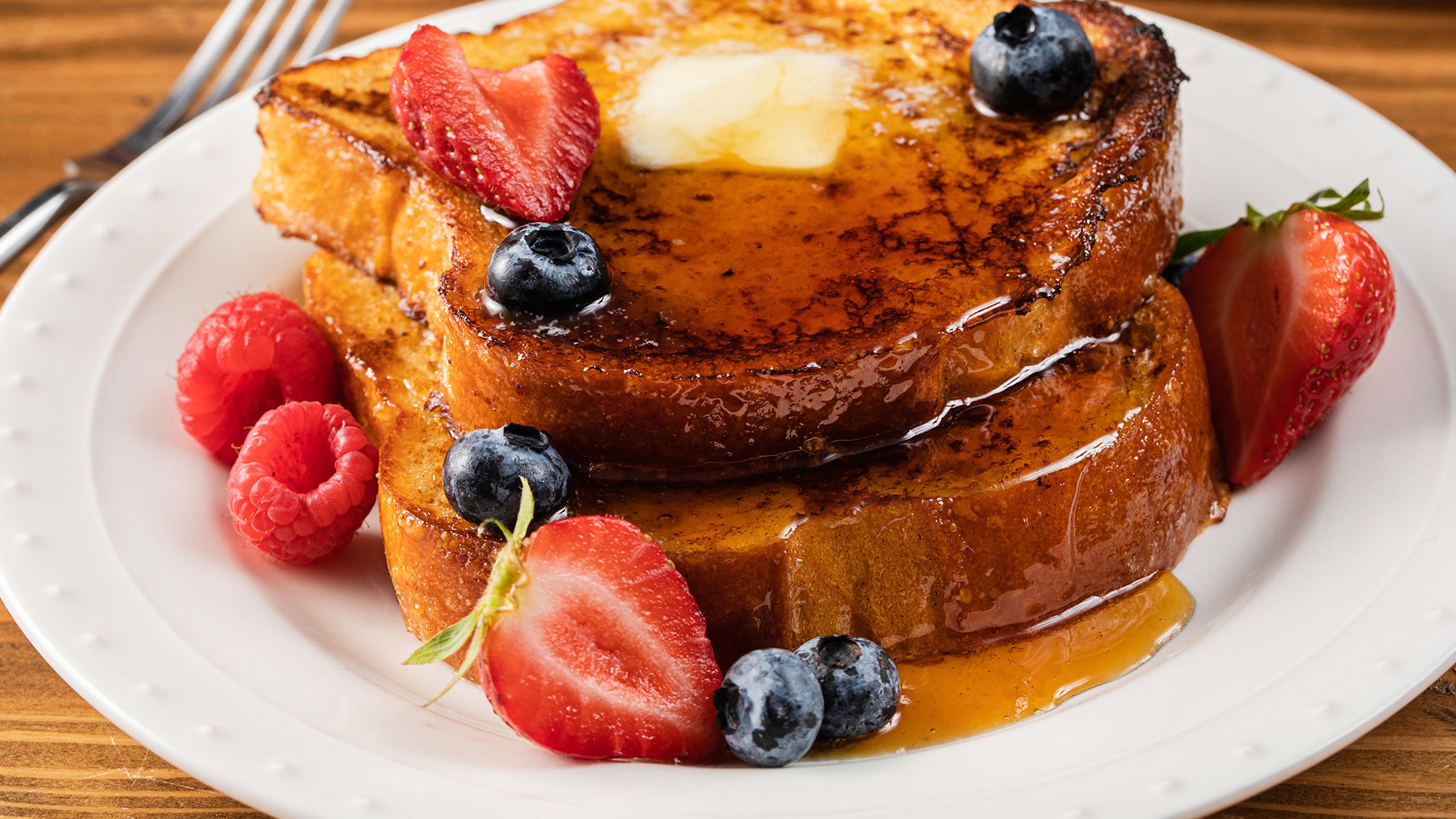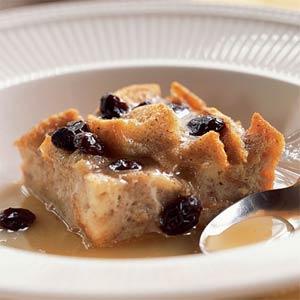Bread Pudding, the frugal dish turned trendy dessert

Bread has been a food staple for the past 30,000 years. Thought to have been invented in the Middle East, specifically Egypt, the first breads were flatbreads. Almost from the beginning people loathed food waste and devised a number of ways to utilize stale bread, from soup thickeners to edible serving vessels, to all kinds of stuffings. Bread pudding can be traced back to the early 11th century as a way for frugal cooks to utilize leftover bread instead of letting it go to waste. Since custard was not invented until the Middle Ages, early bread puddings were simple dishes. Ancient Romans likely made theirs by simply adding milk, fat, and perhaps a sweetener to stale bread. Egyptians made a dessert called Om Ali from bread, cream, raisins, and almonds; India had Shahi Tukra, a dish made from bread, ghee, saffron, sugar, rosewater and almonds. A Middle Eastern variation, called Eish es Serny, was made from dried bread, sugar, honey syrup, rosewater and caramel. Today, practically every country in the world has their own interpretation of bread pudding, in both sweet and savory varieties from India to Uruguay, Argentina to Asia, Europe and the United Kingdom. Bread pudding was brought to America by the early colonists. By the 18th century bread pudding recipes began to appear in a number of popular cookbooks—The Art of Cookery Made Plain and Easy by Hannah Glass included three recipes. Mary Randolph’s The Virginia Housewife provided readers perhaps the first upscale bread pudding recipe she called Sippet Pudding:
“Cut a loaf of bread as thin, as possible, put a layer of it on the bottom of a deep dish, strew on some slices of marrow or butter, with a handful of currant or stoned raisins; do this until the dish is full; let the currants or raisins be on top; beat four eggs, mix them with a quart of milk that has been boiled a little and become cold, a quarter of a pound of sugar, and a grated nutmeg - pour it in, and bake in a moderate oven - eat it with wine sauce.”
 Today, bread pudding is popular throughout the United States, from east coast to west coast, both north and south of the Mason Dixon line. They can be sweet or savory, served at any day-part including breakfast, as a side or even the main entree. And while any bread pudding can be served unadorned, most sweet varieties are served with sauces ranging from alcohol based, such as rum or whiskey sauce, to vanilla and chocolate creme anglaise, to fruit sauces such as berry or citrus. It may surprise you that French toast is a direct cousin of bread pudding. Dating back as far as the 4th century, it was first referenced in the Apicius, a collection of ancient Latin recipes. French toast, like bread pudding, was a way to utilize old and stale bread. But don’t let the name fool you. French toast was being made all over the world long before it got the name. In fact this delightful dish was around even before France was a country. While not clear where the name came from, some historians suspect it was actually the English who, in the 17th century, began referring to it as “French Toast” after arriving in that country from Franc One highly controversial legend credits Joseph French, an innkeeper in Albany, New York, as the dish’s creator in the year 1724, naming it after himself. However, due to the innkeeper's poor grammar he failed to include the apostrophe calling it French Toast, instead of French's Toast. Most historians reject this accounting because of the centuries old documentation of similar dishes.
Today, bread pudding is popular throughout the United States, from east coast to west coast, both north and south of the Mason Dixon line. They can be sweet or savory, served at any day-part including breakfast, as a side or even the main entree. And while any bread pudding can be served unadorned, most sweet varieties are served with sauces ranging from alcohol based, such as rum or whiskey sauce, to vanilla and chocolate creme anglaise, to fruit sauces such as berry or citrus. It may surprise you that French toast is a direct cousin of bread pudding. Dating back as far as the 4th century, it was first referenced in the Apicius, a collection of ancient Latin recipes. French toast, like bread pudding, was a way to utilize old and stale bread. But don’t let the name fool you. French toast was being made all over the world long before it got the name. In fact this delightful dish was around even before France was a country. While not clear where the name came from, some historians suspect it was actually the English who, in the 17th century, began referring to it as “French Toast” after arriving in that country from Franc One highly controversial legend credits Joseph French, an innkeeper in Albany, New York, as the dish’s creator in the year 1724, naming it after himself. However, due to the innkeeper's poor grammar he failed to include the apostrophe calling it French Toast, instead of French's Toast. Most historians reject this accounting because of the centuries old documentation of similar dishes.
 Today both bread pudding and its cousin French toast have been lifted from their original peasant status to gourmet dishes that utilize a variety of ingredients ranging from fruits and nuts, to various sweet and savory fillings. The truth is, bread pudding is no longer restricted to stale bread. One can use hamburger and hot dog buns, dinner rolls and baguettes, sandwich bread and even danish or donuts. In fact bread pudding can be made from just about any breadstuffs and fillings you can think of. To get you started click on one of the links below for a great recipe for sweet bread pudding with rum sauce, as well as a savory strata, which is great for breakfast or brunch. So get cooking, have fun, and remember your creativity is limited only by your own imagination.
Today both bread pudding and its cousin French toast have been lifted from their original peasant status to gourmet dishes that utilize a variety of ingredients ranging from fruits and nuts, to various sweet and savory fillings. The truth is, bread pudding is no longer restricted to stale bread. One can use hamburger and hot dog buns, dinner rolls and baguettes, sandwich bread and even danish or donuts. In fact bread pudding can be made from just about any breadstuffs and fillings you can think of. To get you started click on one of the links below for a great recipe for sweet bread pudding with rum sauce, as well as a savory strata, which is great for breakfast or brunch. So get cooking, have fun, and remember your creativity is limited only by your own imagination.




